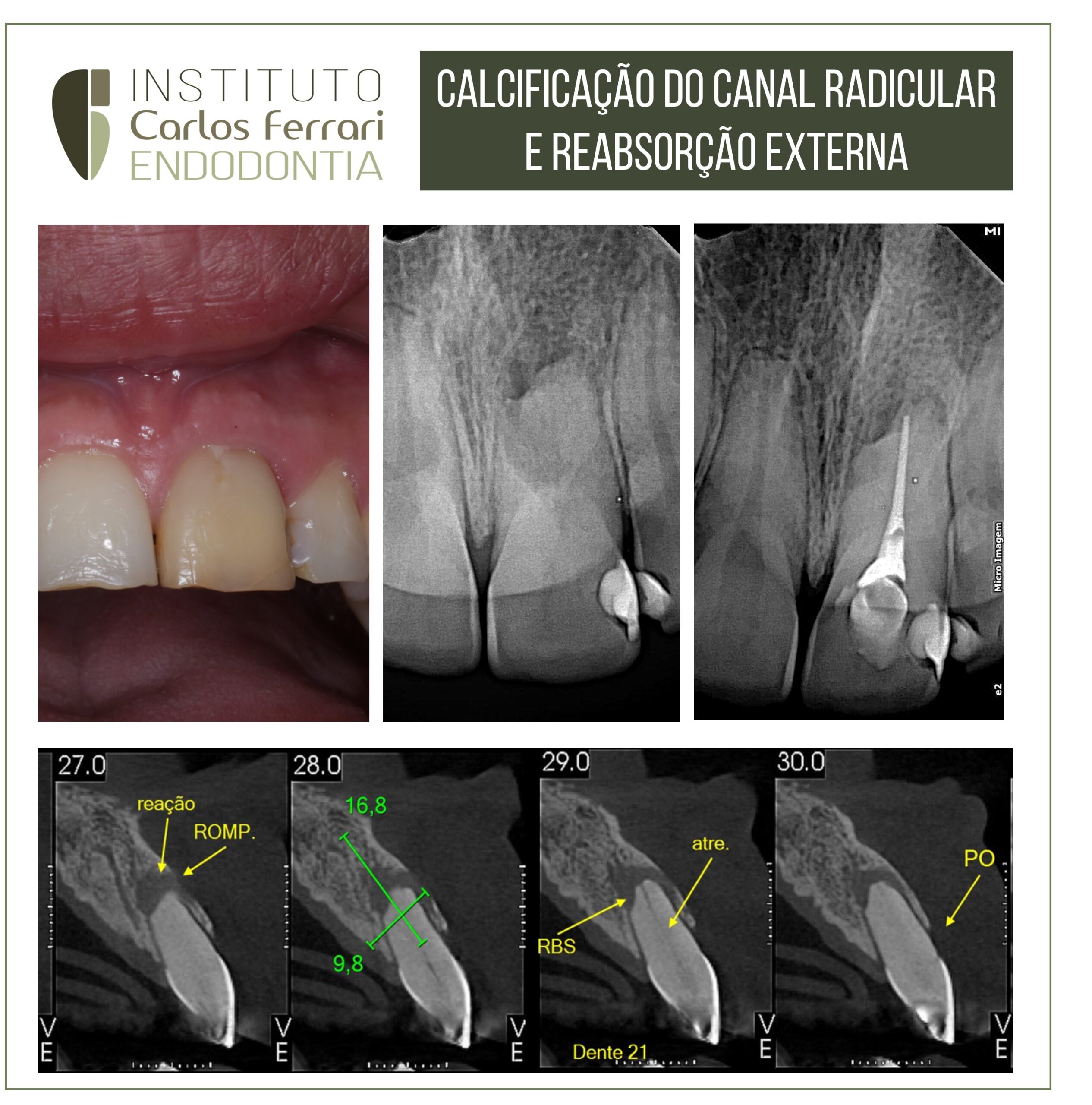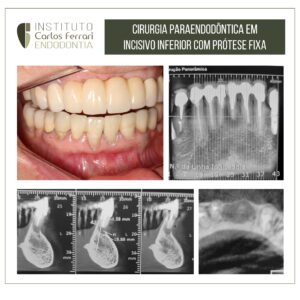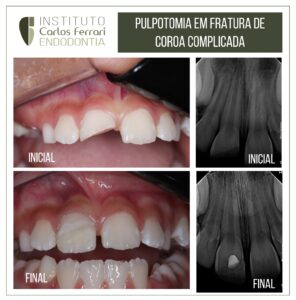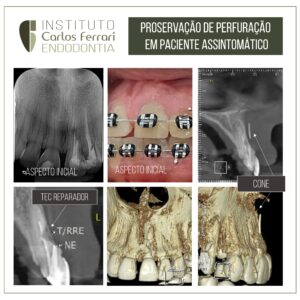External resorption and calcification. A case of root canal calcification and external root resorption in a patient with a 10-year history of trauma.
Clinical examination revealed a darkened crown and a negative thermal test. Radiographic examination and tomography showed no image of the root canal and an image compatible with external root resorption, with lacunae of bone rarefaction.
Treatment alternatives were explained to the patient in the event of failure to find the canal at the initial consultation. With an 08 file, the canal was found and the treatment carried out
Case carried out by student Camila do Valle, from class 10 of the endodontics specialization course at HPG Brasília.
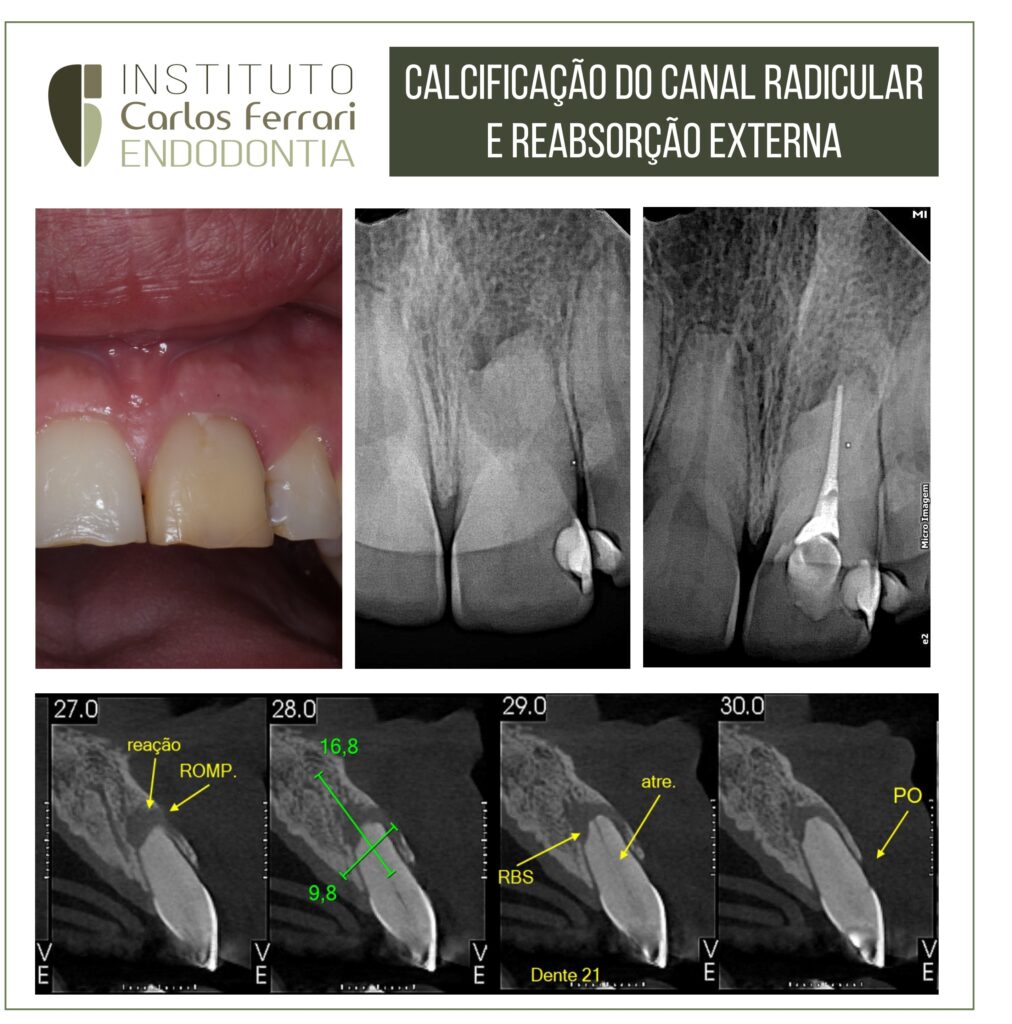
External root resorption
In: Endo et al. MUDI Archives, v19, n2-3, p. 43-52.
INTRODUCTION: According to the glossary of the American Association of Endodontics, root resorption is defined as a condition associated with a physiological or pathological process that results in the loss of dentin, cementum or bone (NE; WITHERSPOON; GUTMANN, 1999). Physiological resorption occurs in the deciduous dentition during exfoliation and allows the eruption of its successor permanent tooth (HAROKOKOPAKIS-HAJISHENGALLIS, 2007; PATEL; KANAGASINGAM; PITT FORD, 2009). On the other hand, pathological resorption can occur after traumatic injuries, orthodontic movement, chronic inflammation of infectious origin of the pulp or periodontal tissues, surgical procedures, and excessive pressure from an impacted tooth or a tumor (FUSS; TSESIS; LIN, 2003).
Resorptions can be classified as internal or external resorption. Internal root resorption is an inflammatory process that begins on the inner surface of the pulp cavity with the loss of dentin, and may reach the cementum (FUSS; TSESIS; LIN, 2003). Its etiology is not fully established, and trauma is the main etiological agent (CALISKAN; TURKUN, 1997).
While external root resorption is a loss of tooth structure, initiated by a mineralized or bare area of the root surface. Both resorptions depending on their progression can cause irreversible damage to the tooth structure, requiring appropriate treatment and monitoring. Because inflammatory root resorption is usually of infectious origin, antimicrobial strategies should be applied to improve prognosis (CVEK, 1973; SJOGREN et al., 1997).
In many clinical situations, periapical radiographs do not allow for a reliable and accurate diagnosis of tooth resorption. However, there are cases in which it is not possible to definitively identify the type of resorption, its degree of evolution, its limits and its cause. Therefore, cone beam computed tomography is an additional resource for detecting root resorption (COHENCA et al., 2007; REN et al., 2013), 2007; REN et al., 2013), and has a low radiation dose when compared to conventional computed tomography, as well as advantages such as better precision and resolution.This technology offers an image in three dimensions, eliminating the overlapping of images as seen in periapical radiographs.
External resorption and calcification.
- https://ferrariendodontia.com.br/endoguide-incisivo-abscesso/


